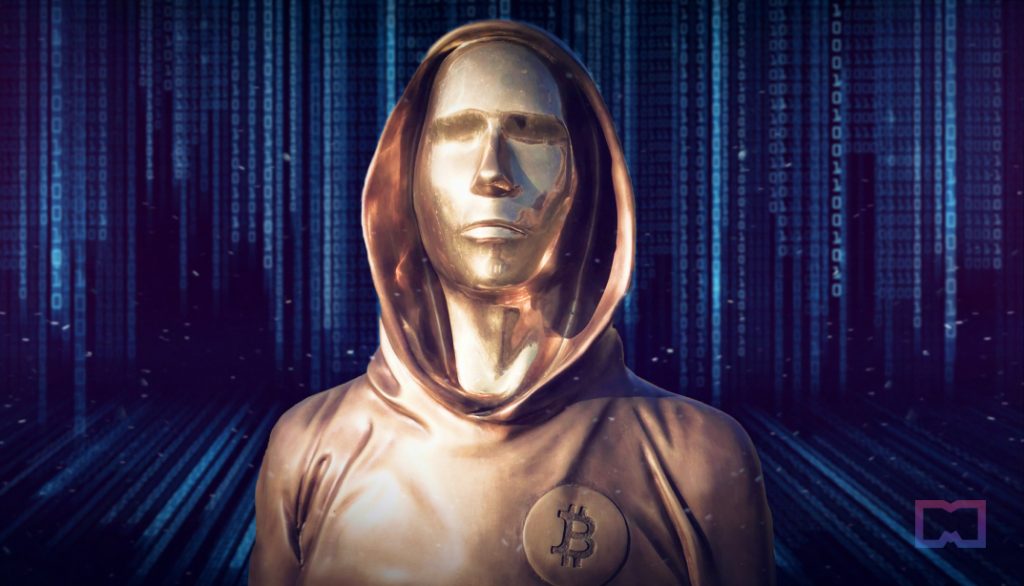Who is the mysterious Bitcoin creator Satoshi Nakamoto?
In Brief
Satoshi Nakamoto is a pseudonym used by the creator of Bitcoin
Their identity remains unknown to this day
Introduction
Satoshi Nakamoto is a person or group who invented Bitcoin and created its original reference implementation. They were active in the development of Bitcoin up until December 2010. Nakamoto also created the first blockchain database as part of the implementation.

The identity of Satoshi Nakamoto is shrouded in mystery to this day. It is believed that Nakamoto is a pseudonym, and the real name of the person or people using the pseudonym is unknown. There are many theories about who Nakamoto might be, but no one knows for sure. What is known is that Nakamoto was active in the development of Bitcoin from its early days and was the primary author of the Bitcoin whitepaper.
Nakamoto created the first blockchain database. They also created the first blockchain database. Nakamoto is trusted to have mined the first-ever block of Bitcoin. After that, they disappeared from the Bitcoin community.
Who is Satoshi Nakamoto?
This has been a recurring question since the creation of Bitcoin. The person responsible for the initial bitcoin design goes by Satoshi Nakamoto. Some speculate that Satoshi is a pseudonym and that an actual creator is a group of people. Others believe that Nakamoto is a Japanese individual who was born on April 5, 1975. However, there is no concrete evidence to back either theory.
Others believe Nakamoto is real, but their true identity has never come out. The only thing that is known for sure is that whoever Nakamoto is, they are the mastermind behind one of the most influential inventions of our time.

Why was Bitcoin created?
There are many theories about why they created Bitcoin. Still, the most commonly cited one is that they wanted to complete a new form of money that any government or financial institution didn’t control. So far, Bitcoin has been incredibly successful.
Nakamoto’s vision has largely been realized, with Bitcoin now serving as a digital gold standard for cryptocurrency. Bitcoin’s creation aimed to take financial control back from central authorities and give ordinary people a chance to participate in a decentralized financial system. Nakamoto believed that by creating a currency that was not subject to government or financial institution control, he could help protect users’ privacy and enable them to transact freely without fear of censorship or confiscation.
Bitcoin was created in response to the 2008 financial crisis. The aim was to create a decentralized, secure, and trustless digital currency that would not require a central bank or authority and could be used worldwide. To achieve this, Satoshi Nakamoto developed the blockchain – a distributed ledger that records all transactions on the network. The first ever block on the Bitcoin blockchain, known as the genesis block, was mined on January 3, 2009.
Miners play an essential role in the Bitcoin network by verifying and processing transactions. This helps to keep the Bitcoin system secure and trustworthy. In return for their work, miners get rewarded with Bitcoin. This provides an incentive for people to keep mining and helps to ensure that there is a steady supply of new Bitcoin. The amount of Bitcoin miners receive per block is halved every four years.
This is known as the “halving,” which helps keep the Bitcoin system inflation-resistant. Over time, the mining rewards will continue to decrease, but users’ transaction fees will go up. This is how Nakamoto designed Bitcoin to be an autonomous system.
As mentioned before, Bitcoin relies on a technology called the blockchain, that is, a shared public ledger where all Bitcoin transaction records are. This lets anyone see which addresses hold how much Bitcoin, but no one can spend the same Bitcoin twice, thus preventing fraud and double spending.
So far, this has worked very well, and there have been no significant problems with the blockchain. However, as Bitcoin becomes more popular, issues that plague traditional currencies, such as inflation or government control, could also affect it. Only time will tell whether Bitcoin can overcome these challenges and become a global currency.
The origins of Satoshi Nakamoto
Satoshi Nakamoto’s origins have always concealed in mystery since the birth of Bitcoin in 2009. While the true identity of Satoshi Nakamoto remains unknown, there are several theories about who they may be.
One popular approach is that Satoshi is a group working together on the Bitcoin project. This theory was on several other individuals co-authoring Satoshi’s original paper on Bitcoin.
Another view is that Satoshi is a person who is either Japanese or of Japanese descent. The theory is based on the fact that Satoshi’s many early posts and comments on Bitcoin were Japanese.
The pseudonym was first used in October 2008 when Nakamoto published a paper titled “Bitcoin: A Peer-to-Peer Electronic Cash System.” Nakamoto outlined a system using cryptography to allow individuals to send and receive money without needing a third party, such as a bank or government.
Nakamoto’s white paper laid the groundwork for future forms of cryptographically secure systems that sketch tamper-proof, transparent, and censorship-resistant. The system’s goal was to allow individuals to reclaim financial power through a decentralized financial system.
However, Nakamoto’s impact on the world of cryptocurrency is undeniable. Satoshi Nakamoto accredits for creating the first blockchain and pioneering the use of decentralization to build a more secure and transparent system, and they have profoundly impacted the world of cryptocurrency.
Possible identities of Satoshi Nakamoto
There are many theories about the true identity of Satoshi Nakamoto, but no one knows for sure who he is. One theory suggests that Nakamoto is Japanese mathematician Shinichi Mochizuki. Mochizuki is known for their work in number theory and is described as a “genius” by some peers.
Other theories suggest that Nakamoto is not Japanese but someone of European or North American descent. One possibility is that Nakamoto is British computer scientist Craig Wright. Wright has been outspoken about his belief that he is Satoshi Nakamoto and has even provided some evidence to support his claim. However, many people remain skeptical of Wright’s claims.
A few individuals have alleged to be the man behind the elusive pseudonym
1) Hal Finney: Finney was an early developer of Bitcoin and was the first to receive a Bitcoin transaction from Nakamoto. Finney has denied being Nakamoto and passed away in 2014.
2) Nick Szabo: Szabo is a well-known cryptographer and early pioneer in digital currencies. He was also associated with the creation of Bit Gold, a precursor to Bitcoin. Szabo has denied being Nakamoto, and there is no concrete evidence linking him to the pseudonym.
3) Craig Wright: Wright is an Australian computer scientist and entrepreneur. He has claimed to be Nakamoto on multiple occasions, but he has never been able to provide conclusive proof.
4) Dorian Nakamoto: Nakamoto is a Japanese-American physicist living in Southern California. He was considered Satoshi Nakamoto based on similarities between his name and pseudonym, but he denied involvement in Bitcoin.
Satoshi Nakamoto: Truths and Mysteries
Who is Satoshi Nakamoto? This question has gone around-the-clock countless times since the mysterious figure first appeared on the scene in 2008 with the release of the white paper that would create Bitcoin.
Nakamoto’s impact on the world has been profound. Not only did he create Bitcoin, but their work has also given birth to an entirely new industry – the blockchain industry. Their innovations have led to numerous other cryptocurrencies and blockchain-based projects.
Characteristics and identity of Satoshi Nakamoto
Some characteristics help to identify the person or group behind the Bitcoin creation myth, Satoshi Nakamoto. These include:
- The use of British English in the original white paper.
- The inclusion of deliberate spelling errors in the code.
- Timestamping of the first block with a newspaper headline from that day.
- The use of the name “Satoshi Nakamoto” in various places throughout the code.
- The lack of personal information about Satoshi Nakamoto in public forums.
This lack of information about Nakamoto’s identity has led to a great deal of speculation. Some have even suggested that he may be a time traveler or an alien! Regardless of who he is, there is no doubt that Satoshi Nakamoto is a fascinating figure, and his story will continue to narrate for many years.
The future of Bitcoin
The future of BTC is uncertain. Some say that it will eventually take over the larger financial institutions and will become just another tool for them to control the masses. Others believe that Bitcoin will continue to grow and thrive as a decentralized force, providing people with a way to take back their finances from the government and large banks. However, one thing is sure: If the proper technological advancements are in place, Bitcoin has the potential to revolutionize the way we interact with the global economy. In the meantime, Only time will tell what the future of Bitcoin holds. It remains one of the most popular and well-known cryptocurrencies in existence.
FAQs
Satoshi Nakamoto is the name used by the unknown person or people who designed Bitcoin and created its original reference implementation. As part of the implementation, they also devised the first blockchain database. In 2008, Nakamoto published a paper describing bitcoin as “a purely peer-to-peer version of electronic cash, allowing online payments to be sent directly from one party to another without going through a financial institution.”
There has been a lot of speculation and rumors surrounding this question. Although many people have tried to uncover Nakamoto’s true identity, the creator of Bitcoin remains anonymous to this day. Some believe one man or woman created Bitcoin, while others believe a group of people is responsible for its creation.
One great way to acquire bitcoins is through online exchanges. Many reputable bitcoin exchanges make it easy for anyone to buy bitcoins with a bank transfer or credit card. Once you have your coins, you can use them however you want.
Bitcoin mining is adding transaction records to Bitcoin’s public ledger of past transactions or blockchains. This ledger of past transactions is called the blockchain, as it is a chain of blocks. The blockchain confirms transactions to the rest of the network as having taken place. Bitcoin nodes use the blockchain to distinguish legitimate transactions from attempts to re-spend coins that have already been spent elsewhere.
A blockchain is a decentralized, distributed ledger that records transactions across many computers so that the record cannot be altered retroactively without the alteration of all subsequent blocks and the network collusion. This allows blockchains to be resistant to modification of any data. These records are referred to as “blocks,” and the technology uses what’s known as a “consensus mechanism” to ensure that the documents or “ledger” remains intact and accurate without the need for a central authority.
Bitcoin wallets are programs that store your bitcoins in a secure environment. Wallets can be obtained for free from various sources on the web, but it’s important to make sure you download a trusted wallet program or app so that your bitcoins will be protected and kept private.
A private key is a secret code that allows only the owner of the key to access and use cryptocurrency. Private keys are also known as ‘secret codes’ or cryptographic keys, which are unique alphanumeric strings used on blockchains like Bitcoin to verify ownership.
Conclusion
Who is the mysterious Bitcoin creator Satoshi Nakamoto? This question has baffled many people since the invention of Bitcoin. There are many theories out there, but no one knows for sure. Some believe that Satoshi is a pseudonym for a group of people, while others believe it is a single person.
Related articles
- Bitcoin halving: The ultimate guide
- Bitcoin payments: How to accept them in your store
- Is Bitcoin legal? A look at BTC’s regulatory environment
Disclaimer
In line with the Trust Project guidelines, please note that the information provided on this page is not intended to be and should not be interpreted as legal, tax, investment, financial, or any other form of advice. It is important to only invest what you can afford to lose and to seek independent financial advice if you have any doubts. For further information, we suggest referring to the terms and conditions as well as the help and support pages provided by the issuer or advertiser. MetaversePost is committed to accurate, unbiased reporting, but market conditions are subject to change without notice.
About The Author
Moses is an experienced freelance writer and analyst with a keen interest in how technology is disrupting the financial sector. He has written extensively on the subject of cryptocurrencies from an investment perspective, as well as from a technical standpoint. He has also been involved in trading cryptocurrencies for over two years.
More articlesMoses is an experienced freelance writer and analyst with a keen interest in how technology is disrupting the financial sector. He has written extensively on the subject of cryptocurrencies from an investment perspective, as well as from a technical standpoint. He has also been involved in trading cryptocurrencies for over two years.


















































